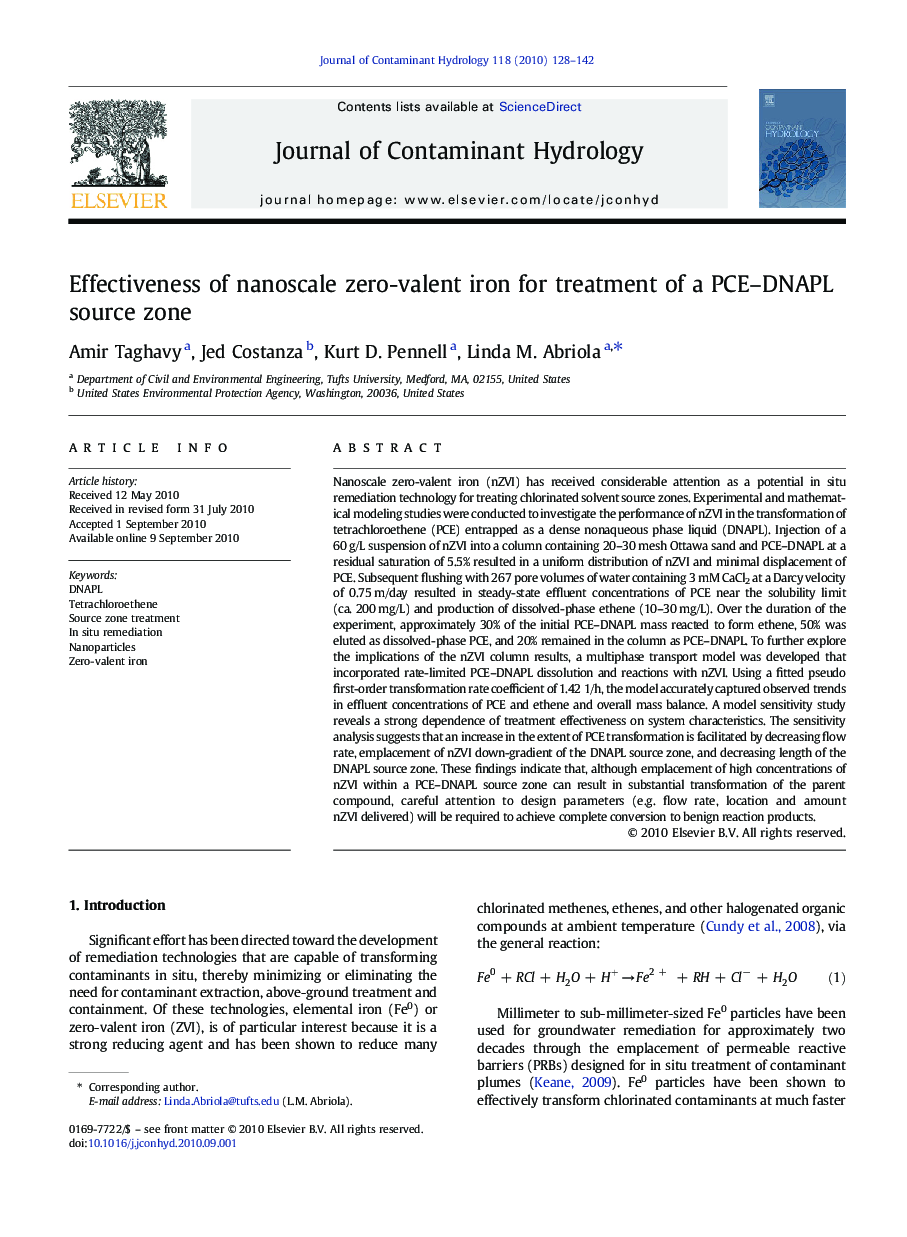| کد مقاله | کد نشریه | سال انتشار | مقاله انگلیسی | نسخه تمام متن |
|---|---|---|---|---|
| 4547127 | 1627083 | 2010 | 15 صفحه PDF | دانلود رایگان |

Nanoscale zero-valent iron (nZVI) has received considerable attention as a potential in situ remediation technology for treating chlorinated solvent source zones. Experimental and mathematical modeling studies were conducted to investigate the performance of nZVI in the transformation of tetrachloroethene (PCE) entrapped as a dense nonaqueous phase liquid (DNAPL). Injection of a 60 g/L suspension of nZVI into a column containing 20–30 mesh Ottawa sand and PCE–DNAPL at a residual saturation of 5.5% resulted in a uniform distribution of nZVI and minimal displacement of PCE. Subsequent flushing with 267 pore volumes of water containing 3 mM CaCl2 at a Darcy velocity of 0.75 m/day resulted in steady-state effluent concentrations of PCE near the solubility limit (ca. 200 mg/L) and production of dissolved-phase ethene (10–30 mg/L). Over the duration of the experiment, approximately 30% of the initial PCE–DNAPL mass reacted to form ethene, 50% was eluted as dissolved-phase PCE, and 20% remained in the column as PCE–DNAPL. To further explore the implications of the nZVI column results, a multiphase transport model was developed that incorporated rate-limited PCE–DNAPL dissolution and reactions with nZVI. Using a fitted pseudo first-order transformation rate coefficient of 1.42 1/h, the model accurately captured observed trends in effluent concentrations of PCE and ethene and overall mass balance. A model sensitivity study reveals a strong dependence of treatment effectiveness on system characteristics. The sensitivity analysis suggests that an increase in the extent of PCE transformation is facilitated by decreasing flow rate, emplacement of nZVI down-gradient of the DNAPL source zone, and decreasing length of the DNAPL source zone. These findings indicate that, although emplacement of high concentrations of nZVI within a PCE–DNAPL source zone can result in substantial transformation of the parent compound, careful attention to design parameters (e.g. flow rate, location and amount nZVI delivered) will be required to achieve complete conversion to benign reaction products.
Journal: Journal of Contaminant Hydrology - Volume 118, Issues 3–4, 25 November 2010, Pages 128–142